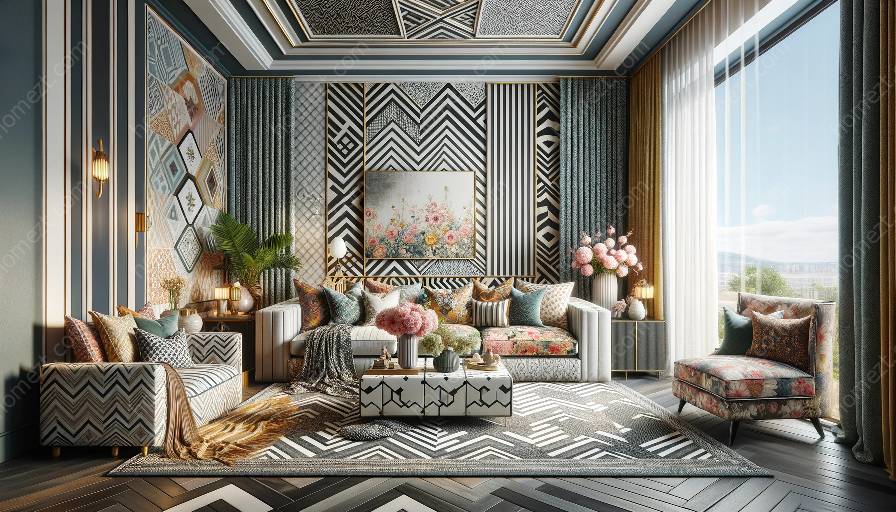When it comes to interior design, mixing patterns can add depth, character, and visual interest to a space. However, achieving a cohesive look while integrating different patterns requires an understanding of key aesthetic principles. In this topic cluster, we will explore the fundamental guidelines and creative tips for successfully mixing patterns in homemaker and interior decor.
Understanding Pattern Mixing
Before delving into specific principles, it's important to grasp the concept of pattern mixing. When done thoughtfully, combining various patterns can elevate the visual appeal of a room and create a unique design statement. From geometric shapes and floral prints to stripes and plaids, each pattern contributes to the overall aesthetic of a space.
Balance and Proportion
1. Scale and Proportion: Consider the scale of each pattern and how they relate to one another. Mixing large-scale patterns with smaller ones can create a dynamic visual balance. For instance, pairing a large floral print with smaller geometric shapes can achieve a pleasing contrast.
2. Color Palette: Maintain a cohesive color palette when mixing patterns. Select a dominant color that ties the different patterns together, and then incorporate complementary or analogous hues to create harmony. Pay attention to the overall color balance in the room to avoid overwhelming visual chaos.
Harmonizing Different Patterns
3. Consistency in Style: Choose patterns that share a cohesive design style. Whether it's vintage, modern, or eclectic, ensuring consistency in the style of patterns can help create a harmonious look within the space.
4. Pattern Density: Vary the density of patterns within the room. Avoid placing multiple busy patterns together in close proximity. Instead, intersperse bold patterns with solids or more subdued designs to allow the eye to rest.
Texture and Layering
5. Adding Texture: Introduce texture alongside patterns to enhance visual interest. Incorporating tactile elements such as woven fabrics, embroidery, or knits can complement patterned elements and create a multi-dimensional look.
6. Layering Techniques: Experiment with layering patterns to add depth to the decor. From using patterned rugs to drapes, throw pillows, and upholstery, layering patterns strategically can amplify the visual impact of the space.
Focal Points and Visual Flow
7. Establishing Focal Points: When mixing patterns, designate focal points within the room to draw the eye and anchor the design. Use a statement piece of furniture, an accent wall, or a striking fabric pattern as a central focus to bring cohesion to the space.
8. Guiding Visual Flow: Consider how patterns guide visual movement within the room. Position patterns strategically to create a natural flow through the space, leading the eye from one area to another cohesively.
Personal Expression and Experimentation
9. Embracing Personal Style: Ultimately, trust your instincts and incorporate patterns that resonate with your personal style. Embracing individual preferences and experimenting with pattern mixing can lead to a truly unique and personalized interior decor.
10. Playful Experimentation: Don't be afraid to experiment with different patterns and combinations. Sometimes, unexpected pairings can yield delightful results, adding an element of playfulness and creativity to the decor.
Conclusion
In summary, mastering the art of mixing patterns in homemaker and interior decor involves a careful balance of scale, color, style, texture, and visual flow. By adhering to the key aesthetic principles outlined in this elaboration, individuals can confidently navigate the world of pattern mixing, creating visually stunning and harmonious spaces that exude personal style and creativity.






































